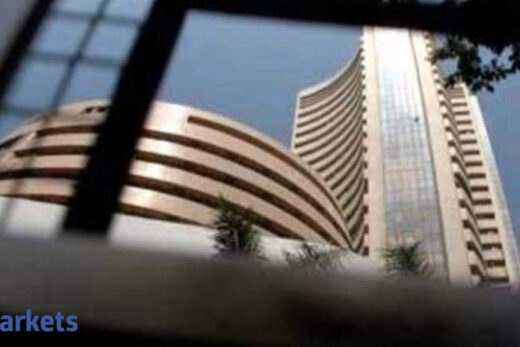What led to the 237% jump in profits in Q2?
I would take you a little back to the first quarter end when I had made this comment very clearly that once the rural sentiments return to normal and the commercial activities begin to happen, we would see a sharp recovery and a very smart recovery from that market. That has been the truth of that market. It does fall faster but also gets up much faster. Between July and September, things were getting to be normal. Lockdowns were opening up. Our branches were beginning to start their activity and consumers were back on the street running their vehicles, using the product, etc.
Clearly their cash flow is what has led to this and the recovery from the delinquent accounts which was provided for in the first quarter, has reversed. Our collection efficiencies have been very good in the three months, 100% being the highest in September. That has helped reduce the gross NPA by close to about 3%.
Also we saw good demand for vehicles. While, all of us know short supply of inventory was a real problem in the marketplace, demand was not and we saw a good disbursement growth of about 65% over the first quarter of last year. So collectively good disbursement, good collections, reversal of delinquent accounts, consumer sentiments remaining positive and the branches all opening up and being able to meet customers were the reasons for the outcome.
In the second quarter we have seen disbursals for most NBFCs clock at an all-time high. Economic recovery clearly is led by strong rural sentiment which is what you alluded to just now. Help us understand the pockets which are witnessing growth and how the overall credit demand is looking like.
Without exception, we are seeing good demand in all products, whether it is for tractors, auto, cars or pre-owned vehicles. Only in the case of heavy commercial vehicles, single truck operators, self-driving driver owners are currently still refraining from adding vehicles but otherwise, every segment has seen demand pick up and across the geography it is without exception.
So overall the economy in the rural market has revived. It should also be important to understand good monsoons are good for rural market sentiments and as everyone hopes for infra opening up, the two together are driving the rural sentiments.
You had guided to the improvement in the quality of the book, the improvement in the NPA picture for your company. But assuming a little bit further, what areas are you seeing improvement in?
Without exception, every geography is showing signs of improvement and yes the NPA reversal has been a good story for us and we believe that going forward it would be exactly this way and we would see declining NPA trends. The reason why we are saying it is because normally the second quarter is not the best quarter for rural areas, given monsoons activity levels normally are not very high. In spite of all of that, this is what we have seen in the marketplace and it is a very clear signal of things getting back to normal out there. Also with good monsoon, we expect the farm cash flow will be very healthy; also, infra will open up which will drive cash flows in that market and the festival season, the marriage season will get normal. Tourism is opening up, schools are opening up and in every segment, we will see the operations of the vehicle and therefore their revenue will go up.
There could be a little dampener around diesel, petrol price which has gone up but I also believe that there would be a repricing of the freight rates as well as the passenger fare which would happen over a period of time. That should settle the issue. Put all of this together, we think that the trend is of declining NPA, good collection efficiencies and growth of business.
A lot of people look to companies like yours to gauge the sentiment in the rural economy and quite a lot has been said about the recovery in that sector. What are the specific trends that you are witnessing?
One thing that we have seen over the past and now is that people are keeping back some of their earnings for future emergencies. This is their learning from the first round of Covid or the second round of Covid when they were suddenly stuck with a problem and they had to meet emergencies, possibly they did not have sufficient funds etc, etc. So now people are not investing all that they have or spend all that they have. That is one trend that we are definitely seeing.
The second trend that we are seeing is that a lot of first time buyers of vehicles, first time takers of credit in the market are getting a little more cautious and saying that should we really acquire more assets in this round or should we wait and watch for some more time? Other than that, as I said, the excitement is up there.
You have seen a big uptick in your disbursements when it comes to pre-owned vehicles. It has gone up from 6% to 17% year-on-year. Where did you see this loan mix concentrate progressing, how will it pan out?
The percentage change is also an outcome of and if other products do not do so well, the percentages within the product mix start to show different numbers but nevertheless pre-owned vehicle is a growth engine for us and we see a lot of demand for pre-owned vehicles especially with the new vehicles not being available. People want vehicles and therefore they are willing to go in for pre-owned vehicles. In case of pre-owned vehicles at the mid-sized to low-end segment, the supply is a major constraint. Not too many people are coming and exchanging their vehicles.
NBFCs have gone slow on requisitions during the last one year and so the stock from NBFCs are not coming up and therefore the demand is very high as compared to the supply even in pre-owned. But that is a growth engine for us but overall as things settle down, as vehicles start becoming available and market becomes more normal, our mix more or less would remain the same with auto about 30%, tractor about 17% odd, the car segment about 25-27%, pre-owned vehicle about 15% and commercial vehicles 6-7%.
What is your outlook when it comes to funding cost and margins?
Funding cost for us has been one of the best. This time, sufficient liquidity was available. We are able to raise money through the PSL route. All instruments, even our fixed deposits in spite of the rates having come down, we see good traction on the deposit side. So the overall funding cost has definitely remained low.
We believe that going forward it will be stable, we do not see much decline and at the same time, the lending yields have also remained constant. That has helped push up the margin because the borrowing costs had come down for us, especially when we changes our old liability and the new borrowings got done, the rates got corrected for us and we see the margin improvement happening. But going forward, I believe the margin would remain stable. We do not see a major drop in the borrowing cost and expect that the lending rates to go up substantially.



